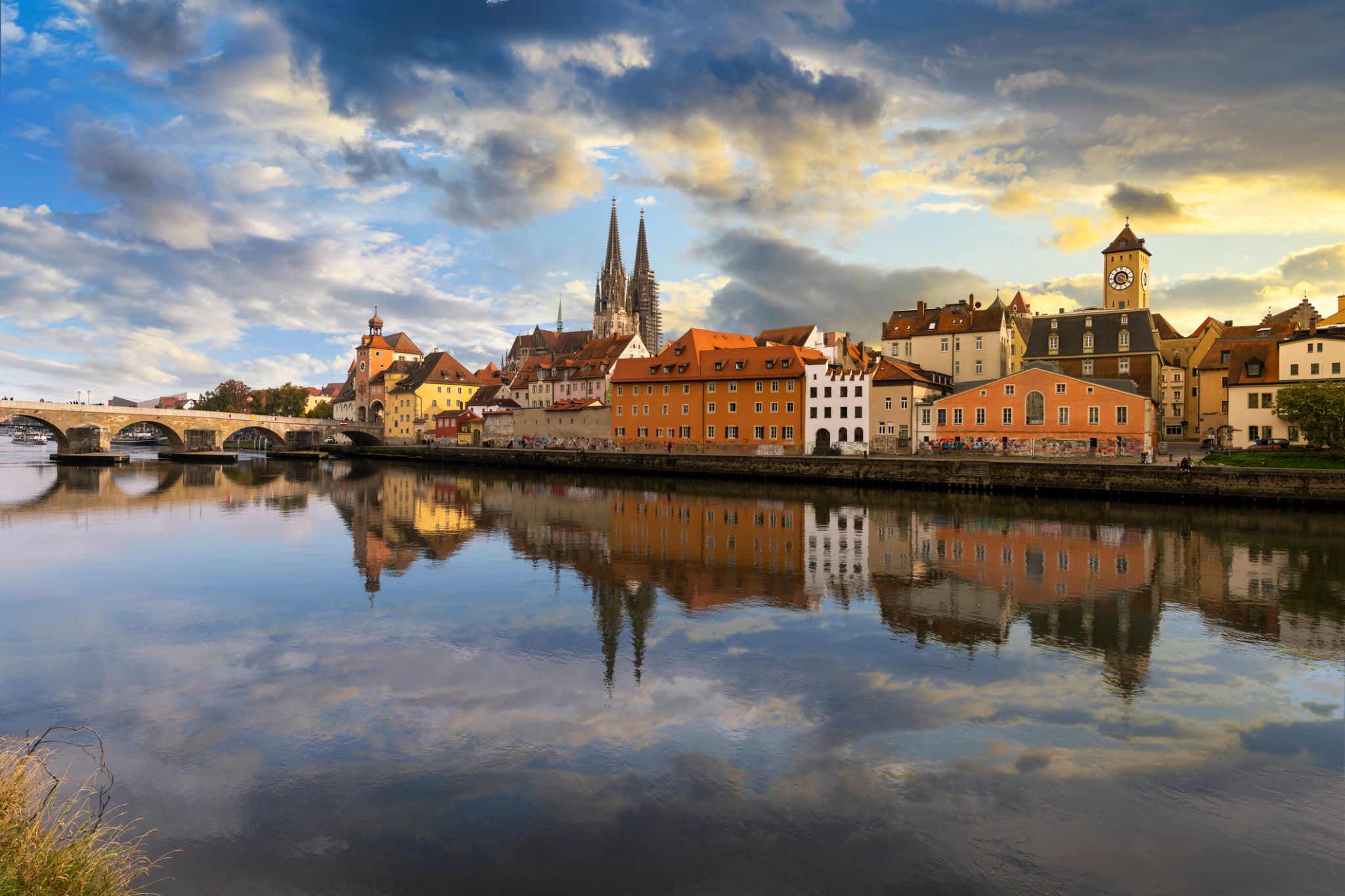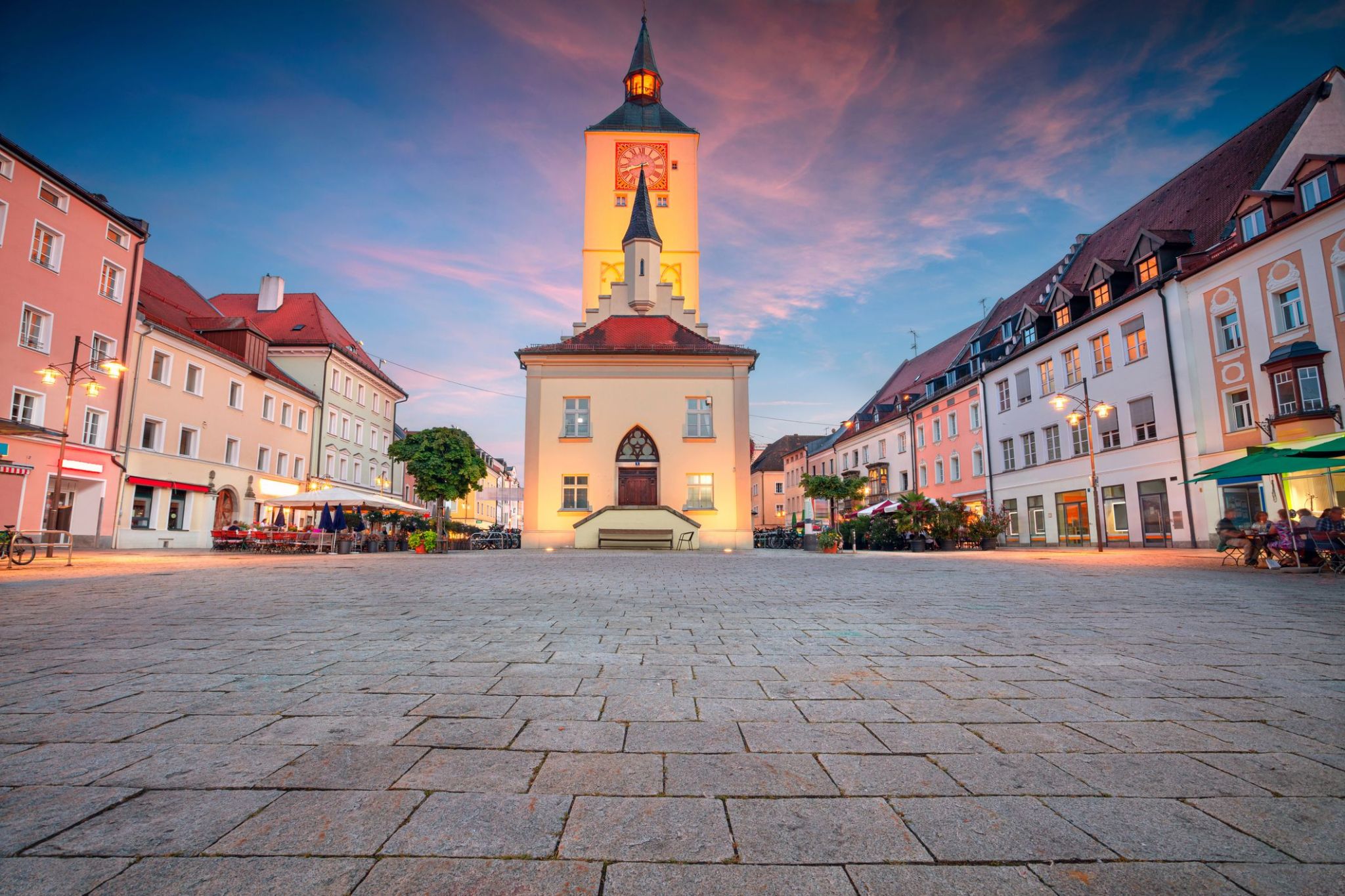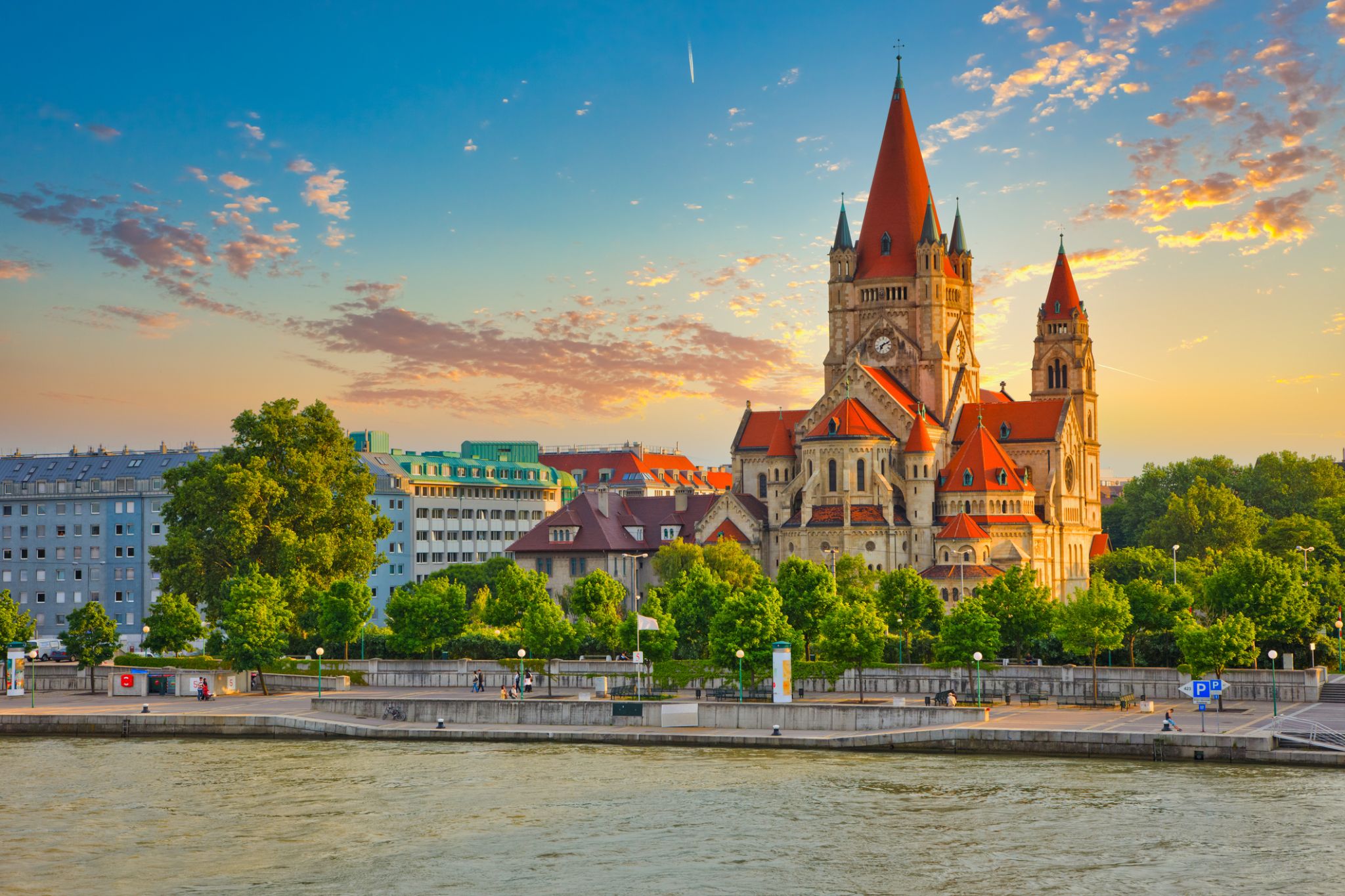

| Firma : Uniworld |
| Statek : S.S. Beatrice |
| Data rozpoczęcia : wt. 01 gru 2026 |
| Data zakończenia : wt. 08 gru 2026 |
| Liczba nocy : 7 nocy |
| Dzień | Data | Port |
|---|---|---|
| 1 | 1.12 wt. | Norymberga / Niemcy |
| 2 | 2.12 śr. | Norymberga / Niemcy |
| 3 | 3.12 czw. | Ratyzbona / Niemcy |
| 4 | 4.12 pt. | Deggendorf / Niemcy |
| 5 | 5.12 sob. | Linz / Austria |
| 6 | 6.12 niedz. | Żyła / Austria |
| 7 | 7.12 pon. | Żyła / Austria |
| 8 | 8.12 wt. | Żyła / Austria |
POSIŁKI
- Wszystkie posiłki na pokładzie przygotowywane są z najlepszych, najświeższych składników
- Powitalne i pożegnalne przyjęcia kapitana
- Powitalne i pożegnalne uroczyste kolacje
- Nielimitowane napoje na pokładzie, w tym wykwintne wina, piwa, alkohole, kawy i herbaty specjalne, napoje bezalkoholowe i woda mineralna
WYCIECZKI
- Wycieczki z przewodnikiem z lokalnymi anglojęzycznymi ekspertami
- Programy Let’s Go i Day in the Country z przewodnikiem
- Najnowocześniejszy przenośny system nagłośnienia Quietvox na wszystkich wycieczkach
- Możliwość korzystania z rowerów i kijków do nordic walking
ZAKWATEROWANIE
- Rejs w kabinie z widokiem na rzekę na luksusowym statku
- Eleganckie kabiny i apartamenty z widokiem na rzekę wyposażone są w ręcznie robione łóżka Savoir® (Anglia), delikatną pościel ze 100% egipskiej bawełny z wysokiej jakości europejskimi kołdrami i wybór poduszek
- Bezpłatny Wi-Fi
- Usługi doświadczonego kierownika rejsów Uniworld
- Programy kulturalne, w tym ekscytujące występy lokalnych artystów na pokładzie
- Napiwki dla personelu (załogi, pracowników, kierownika rejsu/wycieczki) są wliczone w cenę
Rezerwacje i płatności
W momencie rezerwacji wymagany jest depozyt w wysokości co najmniej 10% ceny rejsu (rejs plus opłata portowa plus opłaty za przedłużenie rejsu przed i/lub po rejsie, pomniejszony o obowiązujące zniżki) od osoby. Ostateczna płatność musi zostać dokonana co najmniej 120 dni przed wypłynięciem. W przypadku nowych rezerwacji dopuszczalne jest 72-godzinne wstrzymanie płatności,
ale nie może ono przekroczyć terminu płatności ostatecznej. W przypadku rezerwacji dokonanych na 120 dni przed wypłynięciem, pełna płatność musi zostać uiszczona w momencie rezerwacji.
Rezerwacje zostaną anulowane, jeśli płatności nie zostaną otrzymane w terminie.
Powiadomienie o anulowaniu otrzymane przed
Data rozpoczęcia rejsu
Opłaty za anulowanie za osobę
• 120 dni lub więcej 200 USD za osobę za rejs*
• 119–90 dni 20% ceny biletu **
• 89–60 dni 35% ceny biletu **
• 59–30 dni 50% ceny biletu **
• Niestawienie się 100% ceny biletu **
• Mniej niż 30 dni 100% ceny biletu **
**Cena biletu oznacza koszt dowolnego elementu rejsu lub lądu zakupionego od
Uniworld.
W przypadku anulowania lotu na sto dziewiętnaście (119) dni przed wylotem lub
wcześniej, pełna cena biletu nie podlega zwrotowi. Szczegóły można znaleźć w sekcji „Anulowanie lotu”.
Te opłaty za anulowanie stanowią dodatek do wszelkich opłat za anulowanie, które mogą zostać
naliczone przez agenta podróży. Nie przysługuje zwrot pieniędzy za niewykorzystane usługi ani za niewykorzystane części podróży.

Norymberga to historyczne miasto na południu Niemiec, położone w Bawarii. Znane jest z atmosfery średniowiecza oraz jako centrum niemieckiej kultury i historii. Miasto stało się ważnym centrum handlowym i kulturalnym już w średniowieczu, a dziś jego historyczne centrum przyciąga turystów z całego świata. Jedną z głównych atrakcji jest Zamek Norymberski, który wznosi się nad miastem i oferuje zapierający dech widok na jego ulice i place. Warto również wspomnieć o słynnym rynku, na którym można kupić unikalne towary oraz spróbować tradycyjnych niemieckich dań.
Norymberga ma także istotne znaczenie w historii świata, ponieważ to właśnie tutaj po II wojnie światowej odbyły się procesy norymberskie. Dziś miasto zachowuje pamięć o tym okresie, posiadając liczne muzea i pomniki poświęcone tym wydarzeniom. Ponadto Norymberga jest ważnym centrum kulturalnym, w którym regularnie odbywają się festiwale teatralne, muzyczne i artystyczne. To miasto jest idealnym miejscem dla tych, którzy chcą cieszyć się połączeniem starożytnej historii, współczesnej kultury i unikalnej atmosfery Bawarii.

Norymberga to historyczne miasto na południu Niemiec, położone w Bawarii. Znane jest z atmosfery średniowiecza oraz jako centrum niemieckiej kultury i historii. Miasto stało się ważnym centrum handlowym i kulturalnym już w średniowieczu, a dziś jego historyczne centrum przyciąga turystów z całego świata. Jedną z głównych atrakcji jest Zamek Norymberski, który wznosi się nad miastem i oferuje zapierający dech widok na jego ulice i place. Warto również wspomnieć o słynnym rynku, na którym można kupić unikalne towary oraz spróbować tradycyjnych niemieckich dań.
Norymberga ma także istotne znaczenie w historii świata, ponieważ to właśnie tutaj po II wojnie światowej odbyły się procesy norymberskie. Dziś miasto zachowuje pamięć o tym okresie, posiadając liczne muzea i pomniki poświęcone tym wydarzeniom. Ponadto Norymberga jest ważnym centrum kulturalnym, w którym regularnie odbywają się festiwale teatralne, muzyczne i artystyczne. To miasto jest idealnym miejscem dla tych, którzy chcą cieszyć się połączeniem starożytnej historii, współczesnej kultury i unikalnej atmosfery Bawarii.


Na brzegu rzeki Dunaj leży urocze miasto Deggendorf, otoczone majestatycznym Lasem Bawarskim. To miejsce łączy w sobie naturalne piękno i bogate tradycje kulturowe, tworząc niepowtarzalną atmosferę dla podróżników.
Miasto słynie z historii, starych budynków i malowniczych uliczek. Spacerując po centrum miasta, można zanurzyć się w atmosferze średniowiecznej Bawarii, a otaczające lasy oferują miłośnikom aktywnego wypoczynku liczne możliwości do wędrówek i spacerów na świeżym powietrzu.

Linz is the third-largest city of Austria and capital of the state of Upper Austria (German: Oberösterreich). It is in the north centre of Austria, approximately 30 kilometres (19 miles) south of the Czech border, on both sides of the River Danube. The population of the city is 204,846, and that of the Greater Linz conurbation is about 789,811.
In 2009 Linz, together with the Lithuanian capital Vilnius, was chosen as the European Capital of Culture. Since 1 December 2014 Linz is a member of the UNESCO Creative Cities (UCCN) network as a City of Media Arts. Cities receive this title for enriching the urban lifestyle through the sponsorship and successful integration of media art and involving society in these electronic art forms. Linz is well known for the Linzer torte, which is said to be the oldest cake in the world, with its first recipe dating from 1653.

Vienna is the federal capital and largest city of Austria, and one of the nine states of Austria. Vienna is Austria's primate city, with a population of about 1.9 million (2.6 million within the metropolitan area, nearly one third of Austria's population), and its cultural, economic, and political centre. It is the 7th-largest city by population within city limits in the European Union. Until the beginning of the 20th century, it was the largest German-speaking city in the world, and before the splitting of the Austro-Hungarian Empire in World War I, the city had 2 million inhabitants. Today, it has the second largest number of German speakers after Berlin.Vienna is host to many major international organizations, including the United Nations and OPEC. The city is located in the eastern part of Austria and is close to the borders of the Czech Republic, Slovakia, and Hungary. These regions work together in a European Centrope border region. Along with nearby Bratislava, Vienna forms a metropolitan region with 3 million inhabitants. In 2001, the city centre was designated a UNESCO World Heritage Site. In July 2017 it was moved to the list of World Heritage in Danger.
Apart from being regarded as the City of Music[ because of its musical legacy, Vienna is also said to be "The City of Dreams" because it was home to the world's first psychoanalyst – Sigmund Freud. The city's roots lie in early Celticand Roman settlements that transformed into a Medieval and Baroque city, and then the capital of the Austro-Hungarian Empire. It is well known for having played an essential role as a leading European music centre, from the great age of Viennese Classicism through the early part of the 20th century. The historic centre of Vienna is rich in architectural ensembles, including Baroque castles and gardens, and the late-19th-century Ringstraße lined with grand buildings, monuments and parks.
Vienna is known for its high quality of life. In a 2005 study of 127 world cities, the Economist Intelligence Unit ranked the city first (in a tie with Vancouver and San Francisco) for the world's most liveable cities. Between 2011 and 2015, Vienna was ranked second, behind Melbourne. In 2018, it replaced Melbourne as the number one spot. For eight consecutive years (2009–2016), the human-resource-consulting firm Mercer ranked Vienna first in its annual "Quality of Living" survey of hundreds of cities around the world, a title the city still held in 2016. Monocle's 2015 "Quality of Life Survey" ranked Vienna second on a list of the top 25 cities in the world "to make a base within."
The UN-Habitat classified Vienna as the most prosperous city in the world in 2012/2013. The city was ranked 1st globally for its culture of innovation in 2007 and 2008, and sixth globally (out of 256 cities) in the 2014 Innovation Cities Index, which analyzed 162 indicators in covering three areas: culture, infrastructure, and markets. Vienna regularly hosts urban planning conferences and is often used as a case study by urban planners.
Between 2005 and 2010, Vienna was the world's number-one destination for international congresses and conventions. It attracts over 6.8 million tourists a year.

Vienna is the federal capital and largest city of Austria, and one of the nine states of Austria. Vienna is Austria's primate city, with a population of about 1.9 million (2.6 million within the metropolitan area, nearly one third of Austria's population), and its cultural, economic, and political centre. It is the 7th-largest city by population within city limits in the European Union. Until the beginning of the 20th century, it was the largest German-speaking city in the world, and before the splitting of the Austro-Hungarian Empire in World War I, the city had 2 million inhabitants. Today, it has the second largest number of German speakers after Berlin.Vienna is host to many major international organizations, including the United Nations and OPEC. The city is located in the eastern part of Austria and is close to the borders of the Czech Republic, Slovakia, and Hungary. These regions work together in a European Centrope border region. Along with nearby Bratislava, Vienna forms a metropolitan region with 3 million inhabitants. In 2001, the city centre was designated a UNESCO World Heritage Site. In July 2017 it was moved to the list of World Heritage in Danger.
Apart from being regarded as the City of Music[ because of its musical legacy, Vienna is also said to be "The City of Dreams" because it was home to the world's first psychoanalyst – Sigmund Freud. The city's roots lie in early Celticand Roman settlements that transformed into a Medieval and Baroque city, and then the capital of the Austro-Hungarian Empire. It is well known for having played an essential role as a leading European music centre, from the great age of Viennese Classicism through the early part of the 20th century. The historic centre of Vienna is rich in architectural ensembles, including Baroque castles and gardens, and the late-19th-century Ringstraße lined with grand buildings, monuments and parks.
Vienna is known for its high quality of life. In a 2005 study of 127 world cities, the Economist Intelligence Unit ranked the city first (in a tie with Vancouver and San Francisco) for the world's most liveable cities. Between 2011 and 2015, Vienna was ranked second, behind Melbourne. In 2018, it replaced Melbourne as the number one spot. For eight consecutive years (2009–2016), the human-resource-consulting firm Mercer ranked Vienna first in its annual "Quality of Living" survey of hundreds of cities around the world, a title the city still held in 2016. Monocle's 2015 "Quality of Life Survey" ranked Vienna second on a list of the top 25 cities in the world "to make a base within."
The UN-Habitat classified Vienna as the most prosperous city in the world in 2012/2013. The city was ranked 1st globally for its culture of innovation in 2007 and 2008, and sixth globally (out of 256 cities) in the 2014 Innovation Cities Index, which analyzed 162 indicators in covering three areas: culture, infrastructure, and markets. Vienna regularly hosts urban planning conferences and is often used as a case study by urban planners.
Between 2005 and 2010, Vienna was the world's number-one destination for international congresses and conventions. It attracts over 6.8 million tourists a year.

Vienna is the federal capital and largest city of Austria, and one of the nine states of Austria. Vienna is Austria's primate city, with a population of about 1.9 million (2.6 million within the metropolitan area, nearly one third of Austria's population), and its cultural, economic, and political centre. It is the 7th-largest city by population within city limits in the European Union. Until the beginning of the 20th century, it was the largest German-speaking city in the world, and before the splitting of the Austro-Hungarian Empire in World War I, the city had 2 million inhabitants. Today, it has the second largest number of German speakers after Berlin.Vienna is host to many major international organizations, including the United Nations and OPEC. The city is located in the eastern part of Austria and is close to the borders of the Czech Republic, Slovakia, and Hungary. These regions work together in a European Centrope border region. Along with nearby Bratislava, Vienna forms a metropolitan region with 3 million inhabitants. In 2001, the city centre was designated a UNESCO World Heritage Site. In July 2017 it was moved to the list of World Heritage in Danger.
Apart from being regarded as the City of Music[ because of its musical legacy, Vienna is also said to be "The City of Dreams" because it was home to the world's first psychoanalyst – Sigmund Freud. The city's roots lie in early Celticand Roman settlements that transformed into a Medieval and Baroque city, and then the capital of the Austro-Hungarian Empire. It is well known for having played an essential role as a leading European music centre, from the great age of Viennese Classicism through the early part of the 20th century. The historic centre of Vienna is rich in architectural ensembles, including Baroque castles and gardens, and the late-19th-century Ringstraße lined with grand buildings, monuments and parks.
Vienna is known for its high quality of life. In a 2005 study of 127 world cities, the Economist Intelligence Unit ranked the city first (in a tie with Vancouver and San Francisco) for the world's most liveable cities. Between 2011 and 2015, Vienna was ranked second, behind Melbourne. In 2018, it replaced Melbourne as the number one spot. For eight consecutive years (2009–2016), the human-resource-consulting firm Mercer ranked Vienna first in its annual "Quality of Living" survey of hundreds of cities around the world, a title the city still held in 2016. Monocle's 2015 "Quality of Life Survey" ranked Vienna second on a list of the top 25 cities in the world "to make a base within."
The UN-Habitat classified Vienna as the most prosperous city in the world in 2012/2013. The city was ranked 1st globally for its culture of innovation in 2007 and 2008, and sixth globally (out of 256 cities) in the 2014 Innovation Cities Index, which analyzed 162 indicators in covering three areas: culture, infrastructure, and markets. Vienna regularly hosts urban planning conferences and is often used as a case study by urban planners.
Between 2005 and 2010, Vienna was the world's number-one destination for international congresses and conventions. It attracts over 6.8 million tourists a year.